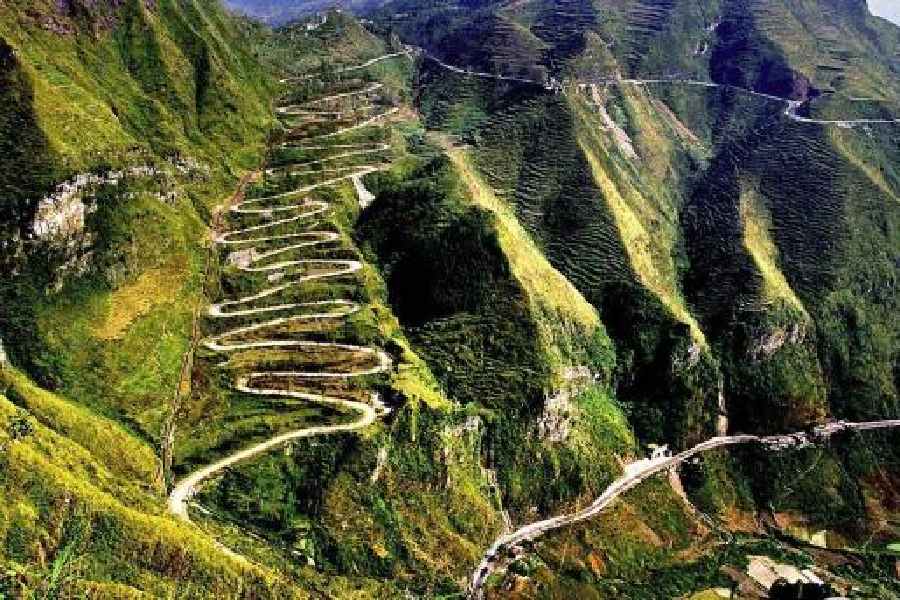Book: The Quest for Modern Assam: A History 1942-2000
Author: Arupjyoti Saikia
Published by: Allen Lane
Price: Rs 1,299
No theories, no postulates. Arupjyoti Saikia’s book instead depends primarily on data drawn from a rich range of official archival records, secondary sources — such as newspaper clippings — past research, and even literary works, which emanated during Assam’s decades of street-fighting on the eve of decolonisation and the years after Indian Independence, to build a compelling narrative that connects the dots of the state’s turbulent recent past.
In this journey, the Japanese invasion during the Second World War, which was virtually Assam’s cataclysmic baptism to the new world order, serves as the flag-off point. The broad architecture of the book rests on three building blocks — Assam’s inherent sense of an unjust deal under Independent India’s federal dispensation; new energies released by the awakening of identity consciousness amongst its disparate ethnic communities; and a pervasive fear of the demographic marginalisation of the Assamese.
Together with a prologue and epilogue, the book runs into a voluminous 852 pages, 546 pages of which constitute the body and the remaining 306 notes and references. Each of the book’s 13 chapters deals with different strands of developments that shaped modern Assam, but because British Assam was virtually the entire Northeast, except for Tripura and Manipur, these chapters are also equally a profile of the frictions and the tensions that went into the making of Meghalaya, Nagaland, Mizoram and Arunachal Pradesh.
The book demonstrates convincingly that the debacles Assam faced during the decades since the 1940s were virtual existential struggles. In the run-up to Independence, for example, there were, Saikia writes, several distinct dangers of Assam losing its identity. For instance, if the Cabinet Mission Plan had been accepted, Assam would have been grouped in Section C with Bengal. This would not only have reduced Assamese speakers to a minority status but also left the state with the distinct possibility of being included in East Pakistan during Partition.
Ethnic divisions within Assamese society also became visible during these years; even the Ahoms considered parting ways with caste Hindu Assamese to join Muhammad Ali Jinnah’s Muslim League. The known rift with Bengali migrants stiffened as well, ultimately leading to the Sylhet Referendum and the latter’s inclusion in Pakistan. Several of the 25 Khasi and Jaintia chieftainships had also been left in a dilemma, while some like Cherrapunjee and Nongstoin had preferred Pakistan. Like them, many Garos too had landed properties in adjoining Sylhet and Mymensingh that were, in addition, a major market for their produce. Some of the figures are telling. The Khasi Hills produced 12 lakh mounds of oranges annually before Partition. In 1948-49, this dropped to 2.4 lakh mounds and shrunk further to 12,000 mounds in 1949-50.
The post-Independence years threw up more challenges for administering Assam’s hills that were left as either ‘Excluded’ or ‘Partially Excluded’ areas under the British. The Constituent Assembly formed the Bordoloi Committee to prepare a report on the matter. During the preparation of this report, much of which was ultimately included in the Sixth Schedule of the Constitution, outlining an autonomy structure for the Assam hill tribes, the characters of the different hill tribes also become evident.
The Nagas were never in doubt that they were not Indians and rejected the Sixth Schedule. The Mizos were more transactional. They had weighed their options of joining India or Burma but after opting for the former, they accepted the Sixth Schedule. The Khasis, with Shillong as the capital of united Assam, were more integrated and had little problem with the Sixth Schedule. In the case of NEFA (Arunachal Pradesh), India decided to leave the tribes there in isolation for some more years and continued with the British model of direct administration by the Assam governor who acted on behalf of the ministry of external affairs, much to the disappointment of Assam.
Expectedly, these were also the years when the Assamese wounded pride reasserted itself, aggressively pushing for unifying Assam under Assamese linguistic nationalism. Unfortunately, this had the opposite effect, alienating the state’s linguistic minorities even more, leading to the bifurcation of their districts from Assam. Similar demands of bifurcation by its plains tribes such as Bodos and Karbis also grew.
Although it does little to upset the integrity of the narrative, the book’s weakness may be in its picturisation of the Japanese invasion. It depends much on newspaper clippings and not the growing volume of researched works on the subject. Hence, it says that the Japanese were logistically strong, when it was the exact opposite. Overconfident of taking Imphal and Kohima quickly, the Japanese troops entered India with 15 days of rations and ammunition. But the battles lasted for four months, bringing disaster for them. The book also mentions a crucial battle in the village of Ukhrul; this battle was fought in Shangshak.










